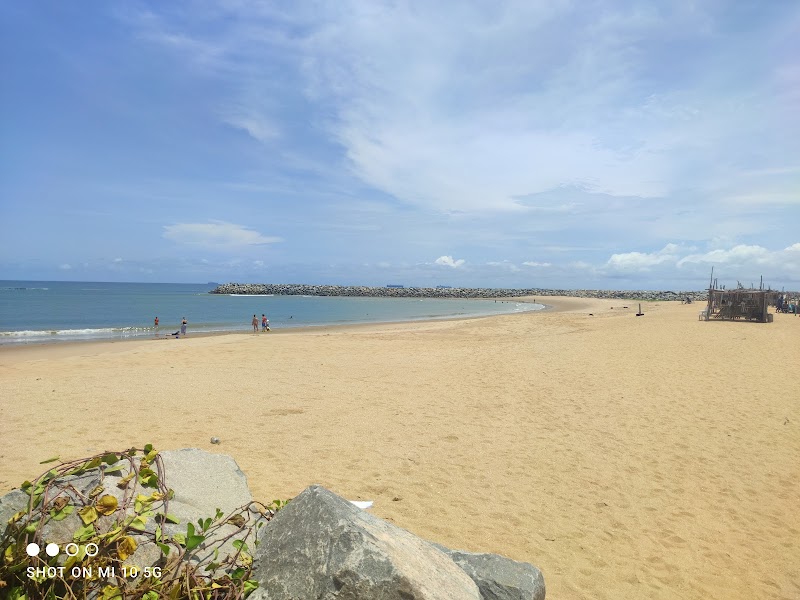Explore Adjarra by bike, weaving through lively traditional markets where local culture bursts at every corner. This practical cycling adventure offers an accessible route to experience the heart of Benin’s vibrant market life while engaging with artisans and traders firsthand.
Cycle Early to Beat the Heat
Start your ride at dawn or early morning to enjoy cooler temperatures and the peak market hustle.
Use a Hybrid or Mountain Bike
The market paths include uneven cobblestones and dirt roads—choose a bike with sturdy tires for stability.
Stay Hydrated and Pack Snacks
Carry water and easy energy food like bananas or roasted peanuts to maintain stamina throughout your ride.
Respect Local Customs
Approach vendors and locals politely, ask before taking photos, and embrace the cultural exchange with an open mind.
Cycling Through Adjarra’s Traditional Markets: A Ride Into Local Life and Culture
Cycling in Adjarra, Benin, offers a compelling way to connect with the vibrant pulse of its traditional markets and the rhythms of local life. The town’s bustling market streets transform into an exciting circuit for cyclists ready to navigate narrow, lively lanes where vendors display colorful produce, handcrafted goods, and fragrant spices. The ride itself stretches across 8 to 12 kilometers of mostly flat terrain, with occasional cobbled patches and packed-earth alleys, allowing for a comfortable yet engaging journey.
Starting early in the morning is vital to catch the peak market activity when sellers are freshest, and the market air is thick with the scent of yams and palm oil. Your bicycle becomes a tool of discovery, pushing you gently forward as the market crowds part around you like a flowing river with a life of its own. The voices of traders, the rhythm of haggling, and the flash of brightly dyed fabrics invite you deeper into this lively cultural exchange.
Practical preparation is key. Bring a sturdy hybrid or mountain bike suited for uneven surfaces, and pack light with a hydration plan. A small backpack with snacks is smart—bananas and roasted peanuts are local staples that keep energy handy. The heat, especially between November and March, can climb quickly, so a sunhat and sunscreen are essentials, alongside comfortable, closed-toe shoes that shield feet from dust and stray debris.
Along the route, you’ll spot artisans working on textiles and ceramic crafts, women balancing baskets on their heads with practiced ease, and children darting between stalls. Pause to sample a slice of fresh mango or a steaming bowl of street-side akara, fried bean cakes, for a true taste of Adjarra.
Cycling here is more than transport — it’s a steady conversation with a community fiercely rooted in tradition yet vibrant and welcoming. Respectful engagement and attentiveness to local customs unlock genuine moments: a shared smile over a market deal or an invitation to watch a weaving demonstration.
Time your visit to avoid the afternoon lull when the sun dares to dominate the streets, making the ride challenging and the markets quieter. Planning a trip over a market day, typically midweek, guarantees a richer encounter with the breadth of local culture.
Cycling through Adjarra’s markets goes beyond exercise; it’s immersive adventure with a practical edge—discover how everyday life in Benin moves at this lively, measured pace.
Nearby Trips
All Adventures
Boat Charters
Water Activities
Adventures near Cotonou
Discover the unique and memorable adventures that make Cotonou special.
Frequently Asked Questions
What is the best way to access Adjarra for cycling tours?
Most travelers arrive via Cotonou, the nearest major city, with reliable transport options such as taxis or minibuses to Adjarra. Renting a bike in Cotonou or bringing your own is recommended for flexibility.
Are the market roads safe for novice cyclists?
While generally flat, the terrain requires caution due to crowds and uneven patches. Novice cyclists should cycle slowly and remain alert, especially in congested areas.
Can I buy local crafts during the market ride?
Yes, many artisans display their work along the market paths. It's a perfect opportunity to buy textiles, pottery, and other handmade goods directly from the makers.
Is it safe to take photos of the market and vendors?
Always ask for permission before photographing individuals. Most vendors are friendly but appreciate respectful requests.
What local foods are a must-try at the markets?
Street foods like akara (fried bean cakes), fresh tropical fruits like mango and pineapple, and homemade doughnuts are popular and affordable treats.
How long does an average market cycling tour last?
Expect to spend between 2 and 3 hours cycling and exploring, depending on how often you stop to interact with vendors and locals.
Recommended Gear
Hybrid or Mountain Bike
Reliable tires and frame stability are crucial for maneuvering both paved and dirt market roads.
Water Bottle or Hydration Pack
Staying hydrated, particularly during hot months, keeps energy levels high on your ride.
Sun Hat and Sunscreen
Protect yourself against the strong tropical sun during market hours.
Comfortable Closed-Toe Shoes
Protect your feet from dust, debris, and narrow alleyways in the market.
Local Insights
Hidden Gems
- "A quiet viewpoint near the Essa market stall where you can watch the market unfold without the crowds."
- "Small weaving workshops just off the main lanes showing traditional Adjarra textile techniques."
Wildlife
- "Local birds like ibis and kingfishers frequent the small river crossings near markets."
- "Swift-footed lizards that dart along sun-warmed walls and alley edges."
History
"Adjarra’s market tradition dates back generations, originally serving as a regional trade hub for agricultural goods and handcrafted wares, still reflecting the socioeconomic heart of rural Benin."

